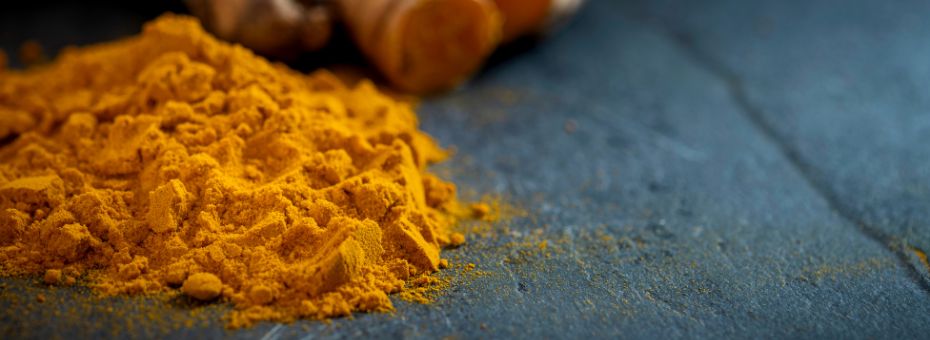The Gut Microbiome's Role in Musculoskeletal Health
Thanks to ongoing research, we now know the microbiome influences many processes involved in the development and homeostasis of the musculoskeletal system, including bone health, skeletal muscle mass and function, and joint health. When you provide your patients with turmeric to support their musculoskeletal health, using the right form of turmeric that is active in the gut will ensure they experience the greatest therapeutic benefits.
When we have a healthy, balanced microbiome, the digestive system is well-equipped for many processes, including:
- Absorbing essential nutrients, such as calcium and vitamin D.
- Producing vitamin K and short-chain fatty acids.
- Aiding in protein synthesis and glucose metabolism.
- Regulating the inflammatory response.
- Promoting the production and activation of musculoskeletal-dependent hormones.
Impacts of Dysbiosis on Bone, Joint and Muscle Health
When there is dysregulation of the microbiome or dysbiosis, we then see a disruption in these musculoskeletal-dependent processes, leading to the following:
- Decreased absorption and production of essential bone and muscle-building nutrients
- Downregulation of hormones involved in bone density regulation
- Upregulation of inflammatory cytokines that negatively affect overall bone and joint health
Consequently, an unhealthy microbiome may contribute to an increased risk of developing musculoskeletal disorders, such as osteoarthritis, rheumatoid arthritis, osteoporosis, and sarcopenia or low muscle mass.1
The Role of Turmeric in the Gut Microbiome
With its long-standing history of medicinal use, turmeric is now gaining more traction in research for its role in influencing the health of the microbiome. More specifically, curcumin, a phytonutrient found in turmeric, has been shown to have a bidirectional relationship with the microbiome, where curcumin metabolism is directly regulated by the microbiome and curcumin metabolites directly influence the function, diversity and composition of gut microbes.2 Therapeutically, curcumin has been shown to:
- Enhance intestinal barrier function and reduce intestinal permeability by preventing tight-junction protein disruption.3-4
- Decrease inflammation within the gut by suppressing the activation of NF-kB and expression of pro-inflammatory mediators.5
- Positively alter the microbiome through the enhancement of beneficial bacterial strains.6
There is, however, a caveat to isolating curcumin for its therapeutic purposes: the discrepancy between in vitro outcomes and replication into in vivo therapeutic outcomes. And this is largely due to the low oral bioavailability of curcumin that limits its therapeutic effects.
Why Supplementing with Curcumin Alone Is Not the Answer
In order for the body to process curcumin, it must undergo extensive metabolism in the small intestine, liver and kidneys. During this process, curcumin is formed into conjugated metabolites that are physiologically inactive and undergo rapid excretion by the body.
Unfortunately, this leaves very little bioactive curcumin to be absorbed by the tissues to produce therapeutic effects. Attempts have been made to enhance the bioavailability of curcumin by bypassing the gut altogether through various delivery systems or utilizing agents to block curcumin metabolism.7 Although these alternate routes may prove to increase absorption, bypassing the gut and avoiding metabolism seems counterintuitive if the goal is to enhance the bioactivity of curcumin for the gut microbiome.
The Therapeutic Benefits of the Whole Turmeric Root
Contrary to most research that specifically focuses on curcuminoids alone, utilizing the whole turmeric root has been shown to enhance therapeutic outcomes in the management of chronic musculoskeletal diseases, such as osteoarthritis8 and rheumatoid arthritis.9 These non-curcuminoid, bioactive compounds, such as turmerones, curdione, germacrone, bisacurone, calebin A and β-elemene, are just a few that have been shown to exhibit powerful anti-inflammatory and antioxidant effects, as well as synergistically enhance the bioavailability of curcumin.10
The Bottom Line
As new research emerges, our understanding of the gut microbiome continues to pave the way for targeting various gut-axis connections and using nutraceuticals to support a healthy microbiota. When looking to enhance the bioactivity of turmeric and improve therapeutic outcomes, we should look no further than what nature intended: Use the whole turmeric root rather than isolate its bioactive compounds.
By combining the benefits of both the curcuminoid and non-curcuminoid compounds, we increase the bioavailability of these phytonutrients while enhancing the microbiome and achieving greater therapeutic outcomes in the treatment and prevention of chronic disease.
 Claire Kacena, DC is the Musculoskeletal Clinical Brand Manager at Lifestyle Matrix Resource Center and a board-certified chiropractor. She obtained her Bachelor of Science degree from Loyola University Chicago in 2010 and then went on to receive
her Doctor of Chiropractic from National University of Health Sciences in 2015. Currently, Dr. Kacena is pursuing her diplomate in clinical nutrition.
Claire Kacena, DC is the Musculoskeletal Clinical Brand Manager at Lifestyle Matrix Resource Center and a board-certified chiropractor. She obtained her Bachelor of Science degree from Loyola University Chicago in 2010 and then went on to receive
her Doctor of Chiropractic from National University of Health Sciences in 2015. Currently, Dr. Kacena is pursuing her diplomate in clinical nutrition.
References
1. R, Boer CG, Oei L, Medina-Gomez C. The Gut Microbiome: a New Frontier in Musculoskeletal Research. Curr Osteoporos Rep. 2021 Jun;19(3):347-357. doi: 10.1007/s11914-021-00675-x. Epub 2021 Apr 17. PMID: 33864574; PMCID: PMC8310472.
2. Scazzocchio B, Minghetti L, D'Archivio M. Interaction between Gut Microbiota and Curcumin: A New Key of Understanding for the Health Effects of Curcumin. Nutrients. 2020 Aug 19;12(9):2499. doi: 10.3390/nu12092499. PMID: 32824993; PMCID: PMC7551052.
3. Faralli A, Shekarforoush E, Ajalloueian F, Mendes AC, Chronakis IS. In vitro permeability enhancement of curcumin across Caco-2 cells monolayers using electrospun xanthan-chitosan nanofibers. Carbohydr Polym. 2019 Feb 15;206:38-47. doi: 10.1016/j.carbpol.2018.10.073.
Epub 2018 Oct 29. PMID: 30553335.
4. Wang J, Ghosh SS, Ghosh S. Curcumin improves intestinal barrier function: modulation of intracellular signaling, and organization of tight junctions. Am J Physiol Cell Physiol. 2017 Apr 1;312(4):C438-C445. doi: 10.1152/ajpcell.00235.2016. Epub 2017
Mar 1. PMID: 28249988; PMCID: PMC5407015.
5. Ohno M, Nishida A, Sugitani Y, Nishino K, Inatomi O, Sugimoto M, Kawahara M, Andoh A. Nanoparticle curcumin ameliorates experimental colitis via modulation of gut microbiota and induction of regulatory T cells. PLoS One. 2017 Oct 6;12(10):e0185999.
doi: 10.1371/journal.pone.0185999. PMID: 28985227; PMCID: PMC5630155.
6. Scazzocchio B, Minghetti L, D'Archivio M. Interaction between Gut Microbiota and Curcumin: A New Key of Understanding for the Health Effects of Curcumin. Nutrients. 2020 Aug 19;12(9):2499. doi: 10.3390/nu12092499. PMID: 32824993; PMCID: PMC7551052.
7. Stohs SJ, Chen CYO, Preuss HG, Ray SD, Bucci LR, Ji J, Ruff KJ. The fallacy of enzymatic hydrolysis for the determination of bioactive curcumin in plasma samples as an indication of bioavailability: a comparative study. BMC Complement Altern Med.
2019 Nov 4;19(1):293. doi: 10.1186/s12906-019-2699-x. PMID: 31684927; PMCID: PMC6829936.
8. Kuptniratsaikul V, Thanakhumtorn S, Chinswangwatanakul P, Wattanamongkonsil L, Thamlikitkul V. Efficacy and safety of Curcuma domestica extracts in patients with knee osteoarthritis. J Altern Complement Med. 2009;15(8):891-897.
9. Amalraj A, Varma K, Jacob J, et al. A Novel Highly Bioavailable Curcumin Formulation Improves Symptoms and Diagnostic Indicators in Rheumatoid Arthritis Patients: A Randomized, Double-Blind, Placebo-Controlled, Two-Dose, Three-Arm, and Parallel-Group
Study. J Med Food. 2017;20(10):1022-1030.
10. Nair A, Amalraj A, Jacob J, Kunnumakkara AB, Gopi S. Non-Curcuminoids from Turmeric and Their Potential in Cancer Therapy and Anticancer Drug Delivery Formulations. Biomolecules. 2019 Jan 2;9(1):13. doi: 10.3390/biom9010013. PMID: 30609771; PMCID:
PMC6358877.



